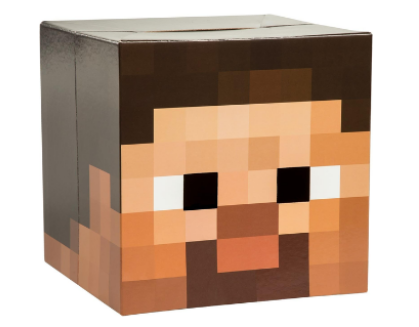Juggling massive mobile games and limited phone storage can feel like packing for a vacation with just a carry-on. Every gigabyte counts, and every decision carries weight. Even casual gamers hit storage walls once downloads pile up.
Heavy mobile games come with chunky updates, expansive graphics, and social features that take up serious space. If you love trying the latest RPG or shooter, inadequate storage quickly leads to sluggish performance and frequent alerts. It’s more than just annoying—it hampers your entire mobile experience.
Thankfully, optimizing your device and using a few clever habits can make space for your favorite titles and keep everything running smoothly. Let’s dig into effective, practical storage management that works for every gamer.
Setting the Stage: Knowing What’s Eating Your Space
Before you can act, you need to see what’s truly using up your storage. Blindly guessing won’t cut it. Device settings offer a clear look, but learning what those numbers mean sets up smarter moves.
Open your phone’s Settings, tap storage, and review the breakdown. You might spot unexpected apps, huge video files, or mysterious ‘Other Data.’ Look closely at your largest game files—they’re likely at the top of this list.
Spotting the Worst Offenders First
Some people scroll past the obvious—PUBG, Genshin Impact, or similar titles almost always take the most space. Expect big logos and file sizes to pop up in your storage dashboard.
You might find that an old racing game you haven’t played in months is hoarding gigabytes. Saying, “Wow, I didn’t know Asphalt Legends was still installed,” is a common realization. Prioritize games you no longer play.
Delete what’s not worth the space with a long press and confirmation. If you hesitate, ask if you’ll actually launch it again this week. This step clears the road for what you actually play.
Comparing Storage Reports Across iOS and Android
iOS lists storage hogs directly under Settings, General, iPhone Storage. Android users navigate to Settings, Storage, then tap Apps. Each OS highlights large files, but categories differ.
Some Android models offer graphs while iOS sometimes sorts apps in descending order. Screenshot your results for later comparison—changes become obvious. Both systems let you offload or delete with two taps.
Decide to offload infrequently used apps if you’re on iOS (keeping data intact) or clear cache/data for Android to retain login info without spending further storage on updates.
| Category | iOS Visibility | Android Route | Actionable Next Step |
|---|---|---|---|
| Games | General/Storage | Settings/Apps | Remove least-played first |
| Media | Photos/Albums tab | Google Photos | Back up and delete locally |
| App Data | App list by size | Clear cache/info | Review every few weeks |
| Other | Misc system data | System files | Rarely removable |
| Downloads | Files app | My Files | Sort and clear large files |
Finding Hidden Storage Gaps with Built-In Tools
Built-in cleaners and tools help you spot gaps you didn’t know existed. No need for extra downloads—most phones have this capability. These tools excel at highlighting forgotten clutter beyond games alone.
After opening Storage settings, tap recommended clean-up actions if visible. These target old caches, duplicate files, and unused downloads that build up quietly while you focus on gaming.
Using Recommendations Without Breaking Anything
Review suggestions for clearing cache or offloading unused apps. Only approve suggestions you understand—don’t delete app data if you want to preserve saved games or progress. Cautious review pays off.
Check the dates of last use before deleting. If your phone suggests deleting a three-month-old podcast episode or a saved replay, you’re unlikely to miss it. Adopt a quick scan routine every two weeks for best results.
- Open Storage in Settings and tap “Clean up recommendations” for specific targets.
- Review game cache sizes and clear only large, unnecessary files for quick savings.
- Inspect old screenshots or screen recordings and delete what you don’t need.
- Use built-in file explorers to locate duplicate downloads, including app update leftovers.
- Never delete files labeled “App Data” for active games—risk of save loss. Focus on caches instead.
Sticking to a regular clean-up habit is like taking out the trash before it piles up. You’ll see more space on your device and keep access to downloads that genuinely matter.
Combining Native Cleaners with Manual Checks
Native cleaners are helpful, but they can miss in-game downloads, DLC, or assets you set to “download for offline.” Check your top five games individually through their app settings, clearing secondary downloads separately.
Deleting event packs or custom content that’s old frees a surprising amount of space. Review each game’s storage section and remove unused language packs or optional models for bonus capacity.
- Use Recommendations tool for system-level clutter; check game settings to catch extra content.
- Prioritize removing large, unused downloadable content rather than basic game files.
- Recheck after every major update—DLC and patches sometimes duplicate.
- Maintain a notes list of common items you clear so repeat sweeps go faster each time.
- Mark favorite event or level files before deleting in case you want to redownload later.
Routine reviews increase available space while preventing accidental loss of cherished progress or favorite level packs.
Trimming Fat: Removing Redundant Game Data
Deleting a game isn’t your only cleanup option. Many games store old patch data, unneeded updates, or language files you never use. Trimming these keeps favorites playable without gobbling up gigabytes.
Browse each game’s menu for a “Manage Storage,” “Downloads,” or similar tab. If you see multiple patch files, keep only the most recent. Delete campaign expansions you’re finished with.
Pinpointing Files That Drain Your Space
Open a game and check storage or download settings—look for events, skins, and soundtrack files. Pick what to keep by asking if you’ll use it in the next week.
Some games require a reinstall to fully remove excess local data. If one app keeps ballooning, uninstall and then reinstall from the app store to strip away invisible files.
Asking “Have I played this mode lately?” leads to less hesitation, making it easier to streamline large, complex games and their multi-gigabyte add-ons.
Managing Save Files and Cloud Sync
For games that support cloud save, enable backup in account settings. This lets you safely delete or offload the local save, freeing immediate space but preserving progress.
Double-check cloud synchronization before clearing—wait for a “sync successful” notification or confirm on another device before deleting anything.
Local saves sometimes hide in app data or hidden folders. Use the game’s own export or backup option, if available, to avoid losing customizations or level completions.
| File Type | Location | Size Impact | What to Do |
|---|---|---|---|
| Patch Data | Game menu/downloads | High | Keep latest; delete old files |
| Downloaded Skins | In-app store/downloads | Medium | Remove skins you don’t use |
| Audio Packs | Game settings/audio | Low | Keep needed languages only |
Following these steps prevents your device from becoming a digital junk drawer, while keeping gaming experiences streamlined and quick to launch.
Using External Storage Wisely
Adding an SD card or using an external storage device can feel like adding a new closet to a cramped house. It provides breathing room, but organizing properly matters if you want results.
Some phones allow games to be moved directly to external storage, while others store only media or backup files. Knowing your device’s capabilities is crucial before investing in extra storage.
| Device | Supports App Moves? | Ideal Use |
|---|---|---|
| Android (SD card slot) | Yes (selected apps) | Game files, videos |
| iPhone (no SD slot) | No | Off-device backup |
| USB OTG | Sometimes | Media, app backups |
Get into the habit of storing download-heavy games or replay videos externally if possible. Make sure to label cards or drives clearly to avoid confusion during regular use.
Leveraging Cloud Storage and Game Streaming
Cloud options let you play high-quality games without tying up local storage. Think of this as living in a rental with access to a massive storage unit—you use what you need when you need it.
Some popular game services let you start gaming instantly, saving only minor files locally. Switching to cloud-based play requires a stable internet connection, but saves substantial space on your device.
Activate cloud-saving features in games that support it. Save progress and downloads—so if you offload, you don’t lose anything. This is especially valuable for story-driven or multiplayer titles with regular updates.
For streaming, try linking your phone with services that run games from a remote server. This way, you only deal with a small app, not massive game data files.
- Sync save data to the cloud before deleting local files, ensuring your level progress remains intact.
- Choose streaming for graphics-intensive, storage-heavy games you play infrequently.
- Reinstall only the app—not the full download—when returning to a cloud game.
- Make backups to Google Drive or iCloud for saves, screenshots, and highlight clips.
- Review cloud storage plans to ensure you have enough free space for full game backups if needed.
Blending local and cloud storage keeps gameplay fast without overwhelming your device’s storage, even as games become bigger and more complex year after year.
Establishing Habits that Prevent Storage Glut
- Set a monthly reminder to review largest apps and games for possible offloads.
- Enable auto-backup of photos and videos to cloud and delete local copies.
- Update games while connected to Wi-Fi to avoid redundant downloads and cache buildups.
- Organize installed apps so games are grouped together for quick management checks.
- Delete voice messages and chat media regular from messaging apps that accumulate large files.
- Monitor device performance; slowdowns signal the need for a storage check-in.
- Keep only current favorites installed; download old games again if you really crave them.
Sticking to these simple routines prevents your phone from becoming overwhelmed. With a steady rhythm, managing heavy games feels less like maintenance and more like second nature.
Think of your phone’s storage as a limited pantry—restock regularly, clear expired items, and only keep what you know you’ll use soon.
Wrapping Up and Maintaining Storage for Smooth Gaming
Optimizing storage for heavy mobile games takes more than occasional digital spring cleaning. Each actionable step builds on the last to open up gigabytes and streamline daily use.
Learning where your device stores the largest files lets you make targeted choices—no more blind deletes. Built-in tools and manual sweeps work hand-in-hand for best results.
Moving files to external or cloud storage creates headroom for new adventures, while syncing progress keeps your experience intact no matter what you uninstall or swap out.
Continuing the simple routines outlined here transforms phone maintenance from a chore into an empowering habit. By keeping up with storage, your favorite games stay close at hand.
As games grow, a little organization goes a long way. Consistent habits set the foundation for seamless gaming, so your device stays ready for fun instead of bogged down with clutter.

